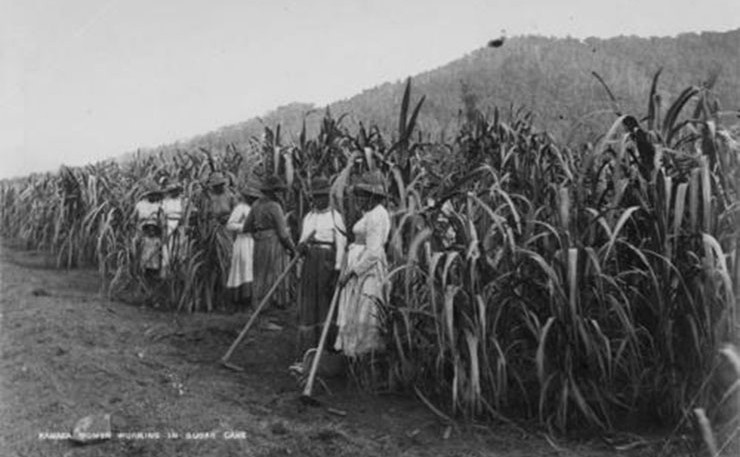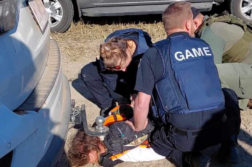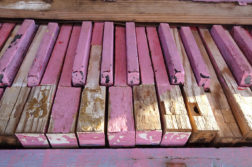While the history wars of late are focussed on the inscriptions of statues of Captain James Cook and the blackbirders, Robert Towns & John Mackay, Jeff McMullen writes that Australian South Sea Islanders want us to consider the legacy of our own brand of human slavery.
As we stare at the devastation on so many Caribbean Islands caused by one of the most savage storms in history, it is natural to feel that we are all Wantoks, as our own Islanders say. One talk, one human race but ah… if it were only that simple.
As I have explored many of the islands in the Caribbean and the South Pacific I am always struck by the profound long-lasting impacts on their history and their common experience of human slavery.
There is a bitter connection between sugar and slavery around the world. Sugar cane was first cultivated in Papua New Guinea and then spread around the world as the Europeans and others also discovered tea and coffee that they thought required a little sweetening. Sugar became the white man’s poison, not only for its serious effects on human health, but because it fuelled an extraordinary period of human exploitation with traumas that still endure today.
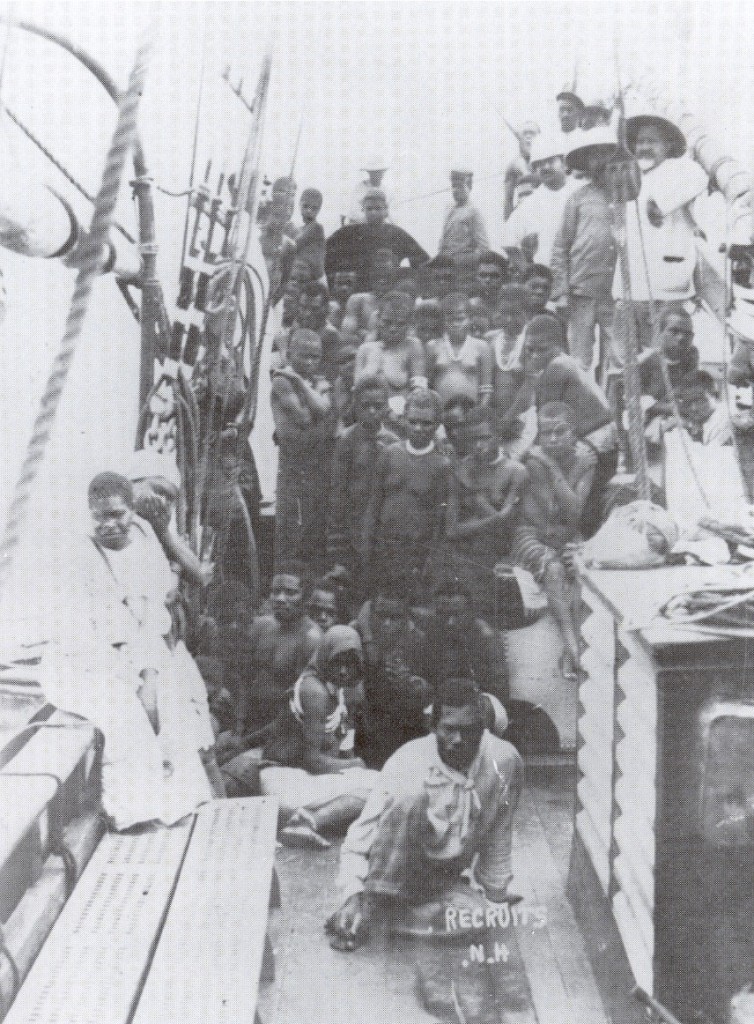
Indeed, the American economist, William Easterly, a Professor at New York University, draws a direct link between the Trans-Atlantic slave trade and the current economic failure of nations where human beings once were plundered and bought and sold like cattle. In his book, The Tyranny of Experts, one of the most insightful studies that I have read in the last 50 years, Professor Easterly demonstrates how technocrats and so called business enterpreneurs often create extraordinarily damaging systems of development aimed at maximising profit but where the consequence is so often tyranny and oppression.
In this context, when we exam carefully and with sensitivity the history of Australia’s South Sea Islanders, few will disagree that it is a form of tyranny and oppression that was imposed on the estimated 62,500 people who were lured, deceived and coerced to labour in conditions akin to slavery on Australian sugar plantations and other farms. Blackbirding, the term derived from the African slave trade, was characteristically violent and oppressive.
Most Australians who watch the Oscar winning film, Twelve Years a Slave, may think that kind of brutality and painful segregation occurred only in North and South America and the Caribbean, where some 10.5 million slaves were shipped from Africa.
I discovered, however, back in the 1960s that in the eyes of some other nations we too had our own white slave masters even though we had curiously sanitised these chapters of the modern Australian story. As a young and green foreign correspondent for the ABC, I was posted to Papua New Guinea in 1968. Up in the highlands a coffee plantation owner told me that “slaves” had been taken from his country to work on Queensland’s plantations in the late 1800s. Papua New Guineans from at least three of their provinces were taken off to Australia with no language or little idea of what they were getting into.
In the years and then decades that followed I encountered many Australian South Sea Islanders from scores of other islands, some married into Aboriginal and Torres Strait Islander families. It was from these stories that I developed a deeper and more complex understanding of how much of Australia’s prosperity was built on the exploitative practice we euphemistically call “indentured labour”.
As some leading Australian South Sea islanders including Bonita Mabo, Emelda Davis and Shireen Malamoo, along with the historians Professor Clive Moore and Dr Peter Prince gathered for a seminar in Sydney to mark the 170th anniversary of the introduction of blackbirding in Australia, by coincidence Australia’s Federal parliament has been conducting an inquiry into what it terms “modern slavery”.
This includes practices such as human trafficking that deceive people into traveling here to be put to work in conditions that they would never have agreed to, paying them or not paying them wretched wages that are clearly below our social standards and keeping them captive through various means to prevent them escaping back to where they came from. How eerily similar are many of these conditions of so called “modern slavery” to the facts surrounding the arrival of 62,500 South Sea Islanders.
The blackbirder, Benjamin Boyd, who shipped men from what is now New Caledonia in 1847 to work on his properties in NSW would have known that slavery was officially abolished through the British Empire by William Wilberforce’s Abolition Act in 1833. But Boyd was not looking at this in moral terms. It was a business proposition.
As Professor William Easterly writes, “Oppression is a crime of opportunity. If you can do it and you can get away with it, you will do it.” That seems blunt but it accurately describes Benjamin Boyd’s treatment of his slaves who suffered greatly, many dying and running away to try to beg a passage home to Lifu Island. Perhaps this history should be included in the information at the Ben Boyd National Park because it would certainly give you much to reflect on as you wander those trails.
Although the colonial government of NSW outlawed blackbirding, in Queensland John Mackay and Robert Towns were doing such a roaring trade that yes, in time, we would see towns named after them and statues erected in their honour.
In both cases these men had to ‘game’ the regulations imposed by the Queensland Government to give this trade in human beings some cover as indentured labour. They saw it as business, cheap labour for the hard yakka in tropical conditions.
If the historical consensus is accurate and an estimated 15,000 of the transported South Sea islanders died in the first year or so from sickness and the harsh conditions, then we are looking at a decimation rate of one in four. That to me is tyranny and oppression.
Australia’s South Sea Islanders were segregated like slaves. They were confined to work on the plantations by regulations that said they could not seek labour more than 30 miles from the coast. Like slaves they could not resign and many were forced to sign contracts with a thumbprint, contracts that many could not read and contracts that trapped them on five pounds a year when white workers might have earned 20 pounds or more.
The South Sea Islanders certainly were treated like slaves, given only weekly food rations. When the flu and other European illnesses to which they had no previous exposure began to decimate their number, they were usually buried in unmarked graves where they fell. These stories are common up and down the sugar coast.
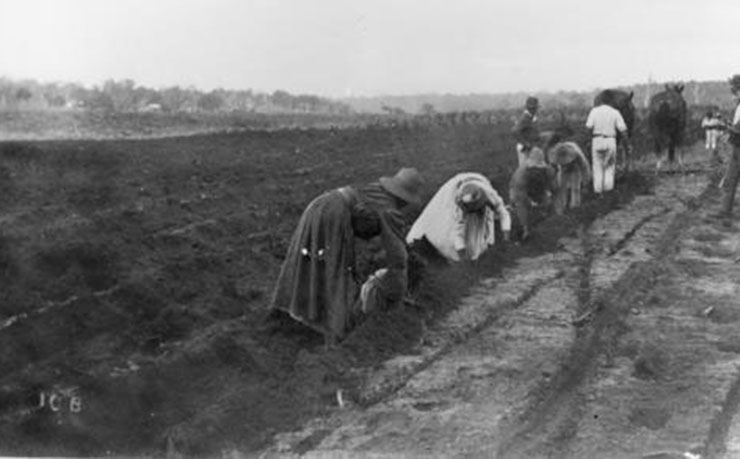
After Federation in 1901 Australia added a particularly tragic twist to our slavery story. Using the White Australia policy as the brutal logic of expulsion, 10,000 or so Pacific Island people were shipped back to the islands. Many saw their meagre wages confiscated to pay for those passages back to islands whose populations had been ravaged by this cruel trade. Ah yes, you might say now, perhaps this in its own way was every bit as cynical and callous as those tragic circumstances in Twelve Years a Slave.
The racism explicit in the enslavement and abandonment of tens of thousands of human beings is indisputable. What troubles us now is the legacy of racism, discrimination and segregation.
Just as William Easterly demonstrates that African economic disasters today are in many cases a direct consequence of that terrifying passage of human slavery, the obliteration of human rights and the destruction of human heritage has caused deep pain for Australia’s South Sea Islanders and ruptured many connections to the island cultures their families came from originally.
Easterly contends that oppression holds back the development of people in the transported group as well as in the society from where they were taken. Mistrust, the suspicion magnified by social exclusion, is a long running, cross-generational trauma. Australian South Sea Islanders have long struggled to find out who they are, where they belong and whom they can trust.
In such circumstances, we owe them the truth and a broader understanding. Despite their recognition as a separate cultural group by the Commonwealth in 1994, the contribution by today’s estimated 300,000 Australian South Sea islanders and their forbears is little known. It should not be awkward to develop a stronger narrative about such contributions to Australia’s development. We should understand that these events and these many shades of human endeavour are what makes us who we are today.
I believe that the Australian South Sea Islanders are now part of the world’s oldest and arguably most successful multicultural society. Let us acknowledge all these ‘comings and goings’, the good and the sorrowful, understanding that the First Peoples have a protocol established over some 65,000 years to open their arms to others and let the land hold us all.
It is the truth of history that will help close the space between us, so that we can be ourselves and at the same time feel that we are one.
* Jeff McMullen addressed the Australian South Sea Islander Symposium, at the Maritime Union of Australia, Sydney, Australia. September 8th 2017.
Donate To New Matilda
New Matilda is a small, independent media outlet. We survive through reader contributions, and never losing a lawsuit. If you got something from this article, giving something back helps us to continue speaking truth to power. Every little bit counts.

